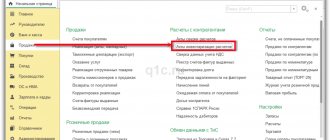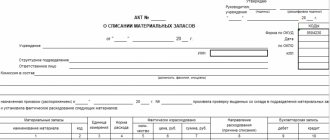A taxpayer applying the simplified tax system, at his own request, from the beginning of the next tax period (calendar year) can change the object of taxation: “income” or “income reduced by the amount of expenses.” 1C experts talk about the procedure for changing the object of taxation under the simplified tax system, about the features of recognizing expenses in accordance with legislative norms, and about what accounting operations need to be reflected in the 1C: Accounting 8 program, edition 3.0, when switching to the simplified tax system with the object “income reduced by amount of expenses."
What is the simplified tax system
STS is a tax regime that stands for “simplified taxation system.”
It implies a special procedure for paying taxes and simplified reporting. Many enterprises and individual entrepreneurs prefer to use this particular system, because... it is one of the most economical in terms of paying taxes and is easy to account for, according to accountants who prepare reports and are responsible for reflecting all business transactions in accounting.
That is, simplification is a tax payment system that has more advantages than disadvantages.
Its advantages are:
- the ability to choose one of the existing objects - “income” (basic tax rate - 6%) and “income minus expenses” (basic rate 15%) (Article 346.14 of the Tax Code of the Russian Federation);
- exemption (with some exceptions) from other types of payments to the budget (VAT, profit, property, personal income tax on business activities);
- simplified reporting;
- submitting the declaration once a year.
It is impossible to unequivocally answer the question which of the objects of taxation under the simplified tax system is more profitable. Organizations and individual entrepreneurs must decide for themselves what to use, depending on the type of their activity and the income they receive.
However, if the amount of expenses is 60% or more, there are grounds to use a taxable object at a rate of 15%. What expenses can be taken into account in the costs of an enterprise are reflected in Art. 346.16 Tax Code of the Russian Federation.
We draw your attention to the fact that it is unacceptable to use both simplified taxation system objects together.
General information about the tax regime of the simplified tax system
Business entities using the simplified tax system under the “6% income” scheme are required to pay a tax amount of 6% of the income received, excluding reflected expenses. This tax regime is beneficial to entrepreneurs and organizations that have a consistently low income, but do not incur regular expenses. In addition, the legislation imposes minimum requirements for “USN” employees who pay tax at a rate of 6% regarding accounting and reporting.
If a “simplified person” receives a high income, but at the same time his activities involve regular expenses, then it is advisable for such a business entity to use the simplified tax system according to the “income minus expenses 15%” scheme. This tax regime allows the “USN agent” to reduce the tax base at the expense of incurred expenses.
Conditions for applying the simplified tax system
In order to continue to apply the simplified tax system in its activities, the taxpayer must meet the following conditions:
- The average number of employees is less than 100 people.
- Revenue - no more than 150,000,000 rubles.
Read about income limits for applying the simplified tax system in the article “Income limits when applying the simplified tax system.” Read about what changes to these limits have been introduced since 2022 here.
- The residual value of the fixed assets must be less than RUB 150,000,000.
There are also a number of certain conditions (Article 346.12 of the Tax Code of the Russian Federation) under which the simplified tax system cannot be applied. In particular, we are talking about some types of activities in which working for the simplified tax system is prohibited. In addition, if an organization has branches or the share of other organizations in its authorized capital is more than 25%, then it cannot apply the simplification.
In order to be able to change the object of taxation (move) from the simplified tax system of 6% to the simplified tax system of 15%, it is necessary to comply with the general conditions under which the simplified tax system can be applied. The legislation does not provide for any additional restrictions for single tax payers.
How to switch to simplified tax system
The payer can switch to simplified payment in 2 ways:
- By submitting a notice of transfer to the Federal Tax Service together with the documents submitted upon registration within 30 days from the date of state registration (clause 2 of Article 346.13 of the Tax Code of the Russian Federation).
- By changing one system for calculating and paying taxes to another, you can switch to the simplified tax system starting next year by notifying the Federal Tax Service no later than December 31.
How to change the simplified tax system to another tax payment regime can be found in the section “Transition from the simplified tax system to another regime.”
Do you need to receive confirmation of the transition to the simplified tax system, read the article “Certificate of a simplified taxation system (STS)”.
The procedure for switching from the simplified tax system 6% to the simplified tax system 15%
The tax period for the simplified tax system is a year during which it is not possible to change the system and object of taxation.
To switch from a simplified tax system of 6% to a simplified tax system of 15%, you must submit to the Federal Tax Service a notification of your desire to change the tax object before December 31. However, it will change only from next year. The document is drawn up by the taxpayer in accordance with Form 26.2-6 (preferably in 2 copies) and sent to the Federal Tax Service by mail or submitted in person. In addition, you can send a notification to the tax authorities in electronic form, for example, via TKS.
You can also view notifications using the link below.
K+ experts have prepared a line-by-line commentary on filling out the notification of changing the object of taxation to the simplified tax system. Get free trial access to the ConsultantPlus system.
When changing the object of taxation according to the simplified tax system, it is important not only to fill out the notification correctly and submit it on time. Certain actions will also be required to reflect transitional moments in accounting.
Important! Recommendation from ConsultantPlus In tax accounting after moving to a new facility, follow the following rules: take into account income in the usual manner. Their accounting does not depend on the object of taxation (Article 346.15, paragraph 1 of Article 346.17 of the Tax Code of the Russian Federation); expenses... Read more about the complexities of expense accounting in K+.
The company paid general taxes
Firms operating on the general taxation system, when calculating income tax, maintain tax accounting either on a cash basis or on an accrual basis.
Cash method of income accounting
If you previously used the cash method, then you will not have any problems when switching to the simplified tax system. After all, the “simplified” ones also work on the cash method.
Difficulties may arise when, using the simplified tax system, you receive payment for goods (work, services) that were shipped under the general tax regime. In this case, the revenue received will have to be included in income when calculating the “simplified” tax.
Another situation: if an enterprise that has decided to switch to the simplified tax system with the object “income minus expenses” does not have time to pay wages in December and pay taxes on it, then it will not be able to take such expenses into account in January of the next year when calculating the single tax. Since these are expenses of the period when the company applied the cash method under the general taxation regime. The right to reduce the single tax will have to be defended in court.
Thus, the FAS of the East Siberian District resolved the dispute with the Federal Tax Service on this issue in favor of the taxpayer (resolution dated February 8, 2005 No. A33-6540/04-S3-F02-18/05-S1).
Therefore, in order to avoid disputes with controllers, it is better to pay all expenses before switching to the simplified tax system.
Accrual method when accounting for income
If before switching to the special regime you used the accrual method, then pay attention to the advances for supplies that you will make on the simplified tax system.
Since the “simplified” person is exempt from the duties of a VAT payer, VAT is not included in the cost of goods, works, and services he sells, and he does not issue an invoice with the allocated tax. This means that you, as a buyer, will not be able to deduct “input” VAT. In these conditions, it is necessary to deal with the contractual base.
If the contract was concluded before the seller switched to the simplified tax system, and the shipment was made after the transition, appropriate changes must be made to it. Renew the contract with the buyer, excluding VAT from the price, or draw up an additional agreement to the existing contract.
Reduce the total cost of work by the amount of VAT. Do this before switching to the simplified tax system, that is, until December 31 inclusive. When such an agreement is reached between the parties, there are no additional costs for the purchase of goods (works, services).
VAT on the transferred advance
If your buyer company has transferred an advance to the seller for the upcoming purchase of goods and, based on the seller’s invoice, has accepted VAT for deduction, then, according to the additional agreement, the seller must return the amount of VAT paid to you. You, as the buyer, must restore the amount of tax accepted for deduction.
note
The additional agreement must come into force no later than December 31 of the year preceding the year of the seller’s transition to the simplified tax system. On this day, he must complete all VAT transactions and report on VAT for the last time by January 25 of the next year.
VAT on advance received
If you are a seller and have received an advance from the buyer for the upcoming delivery of goods, then your actions should be as follows.
First of all, pay VAT from the received advance payment to the budget. In the new year, already working on the simplified tax system, ship the goods to the buyer. He has already paid for it in accordance with the agreement concluded last year. Last year's price includes VAT, which the “simplified” people do not pay. The question arises: what to do with the VAT paid on the advance payment?
As already described above, before December 31 inclusive, you need to renew the contract with the buyer (or draw up an additional agreement to it), excluding VAT from the price.
In the fourth quarter of the year, which precedes the transition to the “simplified” tax system, the amount of tax paid from the advance payment can be deducted (clause 5 of Article 346.25 of the Tax Code of the Russian Federation). To do this, it is necessary to return the VAT to the buyer’s bank account and have documents confirming this return. The VAT-free advance at the time of transition to the “simplified system” must be included in income and subsequently pay a single tax on it.
EXAMPLE LLC “Passive” this year operates on the traditional taxation system and accounts for income and expenses on an accrual basis.
From January 1 of the next year, “Passive” will switch to “simplified”, but will continue to maintain accounting records. On December 22 of this year, the company received an advance in the amount of 118,000 rubles. for the supply of goods subject to VAT at a rate of 18%. Delivery should occur next year. The Liability accountant made the following entries in the accounting: December 22 DEBIT 51 CREDIT 62 subaccount “Advances received”
- 118,000 rubles.
– an advance was received for future deliveries; DEBIT 76 subaccount “Advances received” CREDIT 68 subaccount “VAT calculations”
– 18,000 rubles.
(RUB 118,000 × 18%: 118%) – VAT is charged on the advance; December 31
The contract with the buyer was reissued for the amount of 100,000 rubles. The following entries were made in the accounting:
DEBIT 62 subaccount “Advances received” CREDIT 51
– 18,000 rubles.
– the overpaid VAT is returned to the buyer; DEBIT 76 subaccount “Calculations for VAT” CREDIT 62 subaccount “Advances received”
– 18,000 rubles.
– returned VAT is accepted for deduction; January 10 DEBIT 62 CREDIT 90-1
– 100,000 rubles. – the goods are shipped to the buyer; In the book of income and expenses, income in the amount of 100,000 rubles is indicated.
note
The deduction can be applied only in the last quarter preceding the month of transition to the simplified tax system. You cannot use the deduction after switching to the special regime, since you are not a VAT payer. In this case, during the shipment period, the organization will have to accrue and pay VAT to the budget (clause 5 of Article 173 of the Tax Code of the Russian Federation). Thus, a company that did not take advantage of the advance VAT deduction in a timely manner will have to pay tax to the budget twice - both on the advance payment and on the sale.
Until January 1, 2016, the following rule was in effect. If, accidentally or intentionally, the buyer was issued an invoice with allocated VAT, then the entire amount of tax allocated in the invoice had to be paid to the budget. In addition, the amount of payment that the buyer transferred, together with VAT, had to be taken into account in income (see letters of the Federal Tax Service of Russia for Moscow dated November 2, 2010 No. 16-15 / [email protected] , Ministry of Finance of the Russian Federation dated April 14, 2008 No. 03-11-02/46). That is, a single tax had to be charged on VAT accrued on sales.
On January 1, 2016, the changes introduced by Federal Law No. 84-FZ of April 6, 2015 to paragraph 1 of Article 346 15 of the Tax Code came into force. They make it possible to eliminate double taxation of “simplified” people. From this date, organizations and entrepreneurs using the simplified tax system do not include VAT received in connection with the issuance of invoices in their income.
This is due to the fact that from January 1, 2016, when determining the object of taxation, “simplified people” take into account income in accordance with paragraphs 1 and 2 of Article 248 of the Tax Code. While until 2016 they included in the tax base income from sales in accordance with Article 249 of the Tax Code and non-operating income in accordance with Article 250 of the Tax Code. The provisions of Article 248 allow tax amounts imposed by them on the buyer to be excluded from the income of sellers. This is not provided for by the provisions of Articles 249 and 250 of the Code. Accordingly, the VAT amounts presented by the “simplified” buyer are now not taken into account as part of simplified taxation system income.
Payment of last year's revenue
The opposite situation also happens when a person receives payment for goods (work, services) shipped under the general tax regime.
Since VAT and income tax have already been charged on this money, the “simplified” person does not have to pay a single tax on it. For him, payment of last year's revenue is not income.





